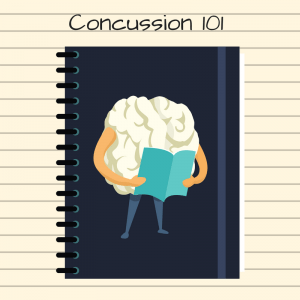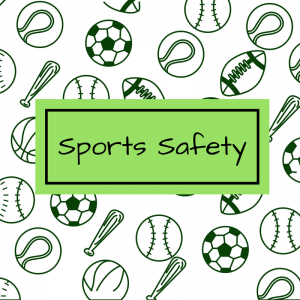 Editor’s Note: Meet, Roxane, Brain Energy Support Team (BEST) guest blogger and junior reporter! Roxane shares her special investigative report with BEST on concussions and how they impact teens and kids.
Editor’s Note: Meet, Roxane, Brain Energy Support Team (BEST) guest blogger and junior reporter! Roxane shares her special investigative report with BEST on concussions and how they impact teens and kids.
Concussions, a type of Traumatic Brain Injury (TBI), are very common in the United States, reaching over 3 million cases a year according to the Mayo Clinic. They are caused by a hit to the head or a violent shaking of the body and/or head. Some of you may be thinking that a concussion is not a very big deal, but it is. A study showed that repeated concussions can cause lasting damage. Some people don’t fully recover from a concussion, according to the Centers for Disease Control and Prevention (CDC). Imagine what would happen if you got multiple. Thankfully, the most common type of TBI is mild, but 5.3 million Americans live with the consequences of severe TBI.
Research shows that kids and teens are more vulnerable to concussions and TBI because they don’t have fully myelinated brains, meaning their nerves don’t have as much insulation as adults. During this past decade, concern about concussions and how they affect kids’ minds has increased. Because of this, Dr. Ann McKee, chief neurologist for the National VA ALS Brain Bank, and her team’s research has shown that concussions can also cause structural damage as well as metabolic damage.
The symptoms of a concussion fall into four categories: cognitive (for example, lack of concentration), sleep (more or less than usual), emotional (depression), and somatic (headaches). If you properly manage concussions, 80% of people recover within 10 days, 20% of people will recover beyond that time and 5-10% will have post-concussion syndrome. Of that 5-10%, a very small number of people will have never recover. New research shows that having past concussions may increase risks of CTE, a degenerative brain disease.
 Concussions can happen in any sport with accidental or non-accidental blows to the head. To help prevent concussions, the CDC proposes to use age appropriate and size appropriate booster and car seats, always wear helmets right for the activity that you are doing, use stair gates for toddlers, and play on playgrounds with soft surfaces like mulch or sand, not dirt or grass. The CDC also gives guidelines for specific sports that I am citing below. For baseball, they recommend wearing proper batting helmets. For basketball, field hockey, and lacrosse they recommend enforcing safety rules. For cheerleading, they recommend having appropriate supervision. For football and hockey, they recommend limiting the amount of contact in practice. For soccer, they recommend to limit heading balls for ages 10 and up. For wrestling, softball, and volleyball, they recommend teaching proper techniques.
Concussions can happen in any sport with accidental or non-accidental blows to the head. To help prevent concussions, the CDC proposes to use age appropriate and size appropriate booster and car seats, always wear helmets right for the activity that you are doing, use stair gates for toddlers, and play on playgrounds with soft surfaces like mulch or sand, not dirt or grass. The CDC also gives guidelines for specific sports that I am citing below. For baseball, they recommend wearing proper batting helmets. For basketball, field hockey, and lacrosse they recommend enforcing safety rules. For cheerleading, they recommend having appropriate supervision. For football and hockey, they recommend limiting the amount of contact in practice. For soccer, they recommend to limit heading balls for ages 10 and up. For wrestling, softball, and volleyball, they recommend teaching proper techniques.
If you happen to get a concussion, the best way to recuperate is to rest your brain and body. You should also be closely monitored by a family member or friend. If you need a pain reliever, according to the Mayo Clinic you should use analgesic. Although it may sound as if you can deal with it on your own, you should still visit a doctor to get diagnosed because if you have a severe concussion you will need medications and proper care.
If you want to learn more about concussions you should go to the CDC’s website (cdc.gov) or the Mayo Clinic’s. You could also look online and enter the search term, sports concussions, to find recent news and articles about sports’ concussions.

Roxane E. is a local student, BEST volunteer and an aspiring writer.
